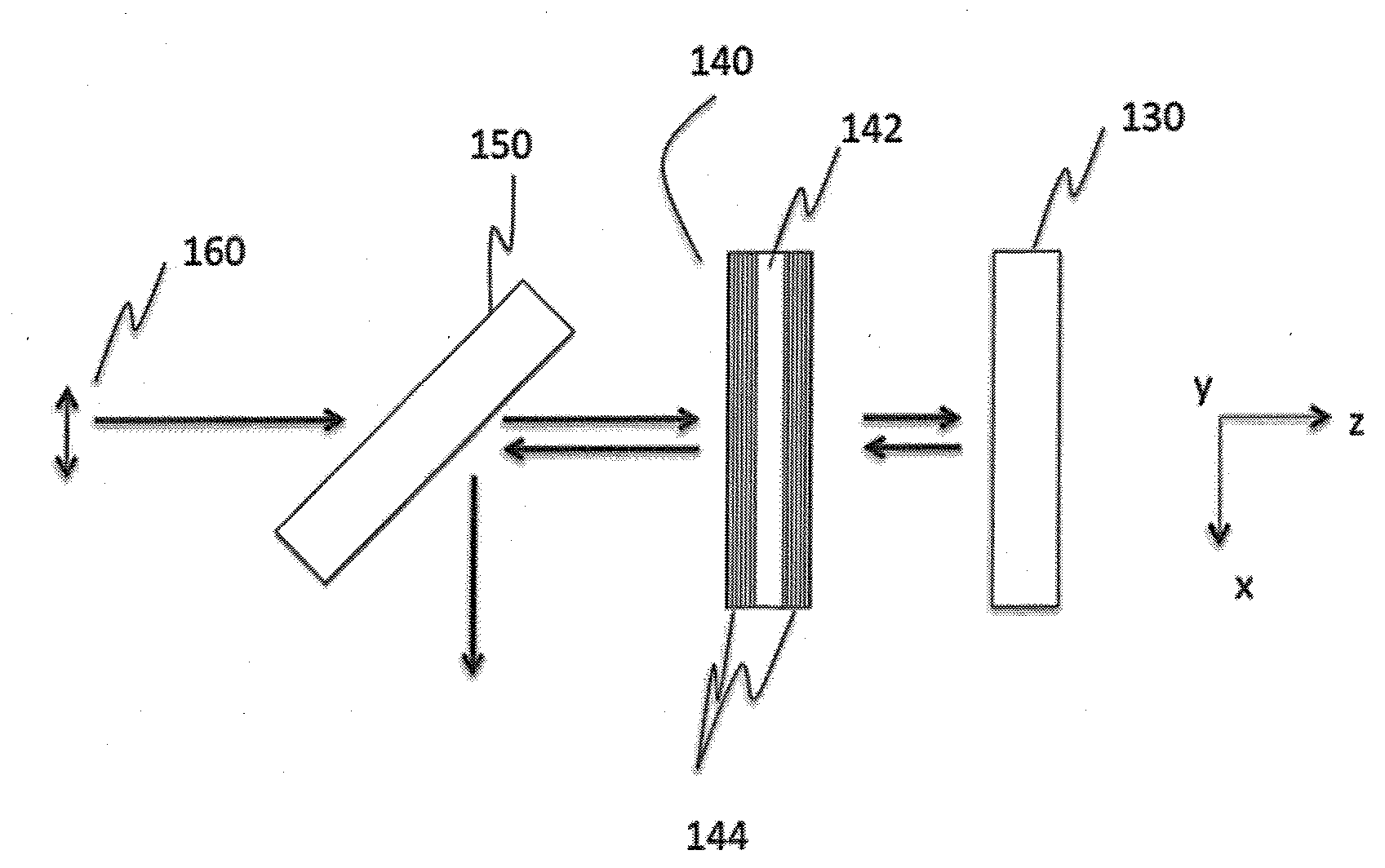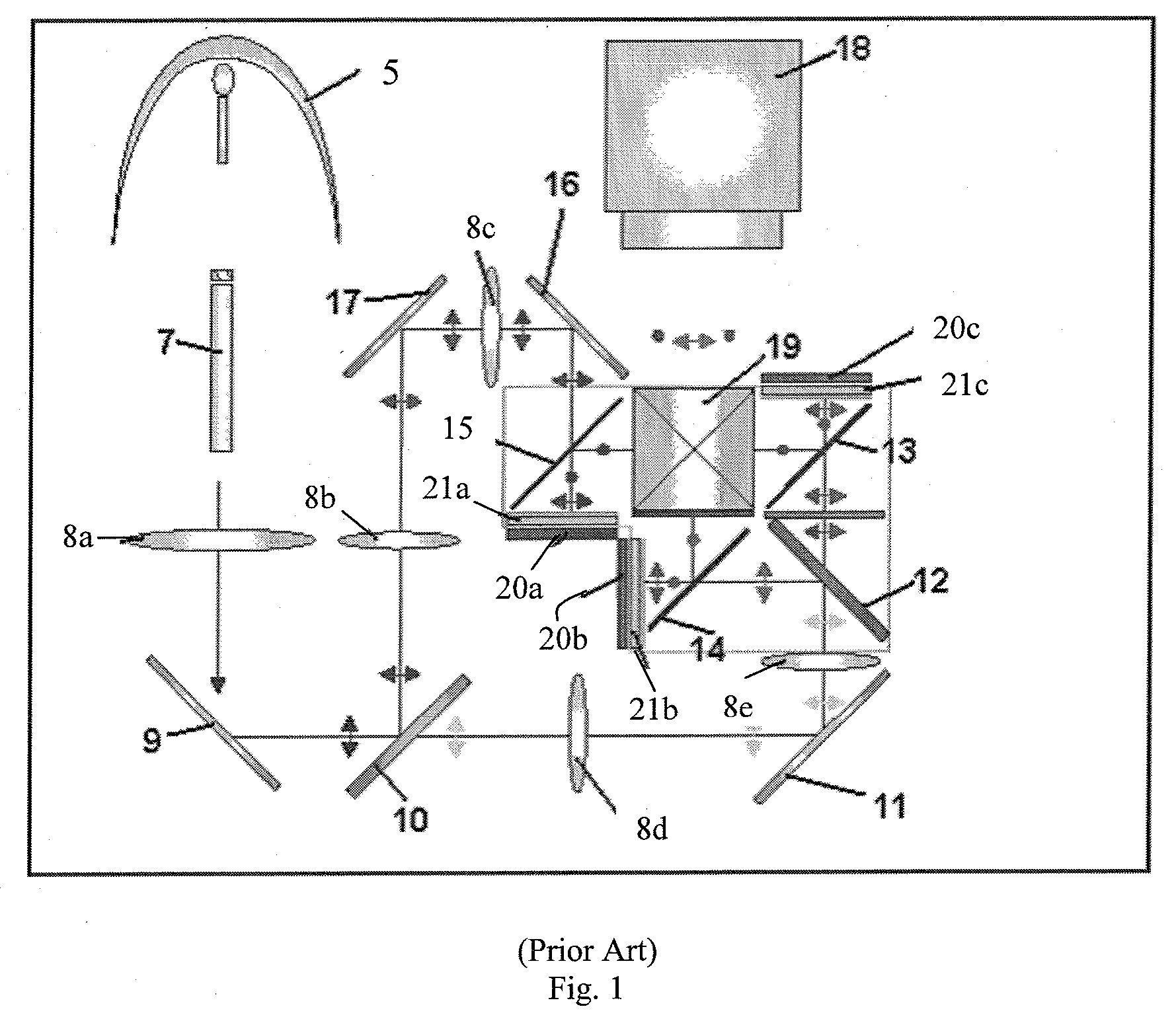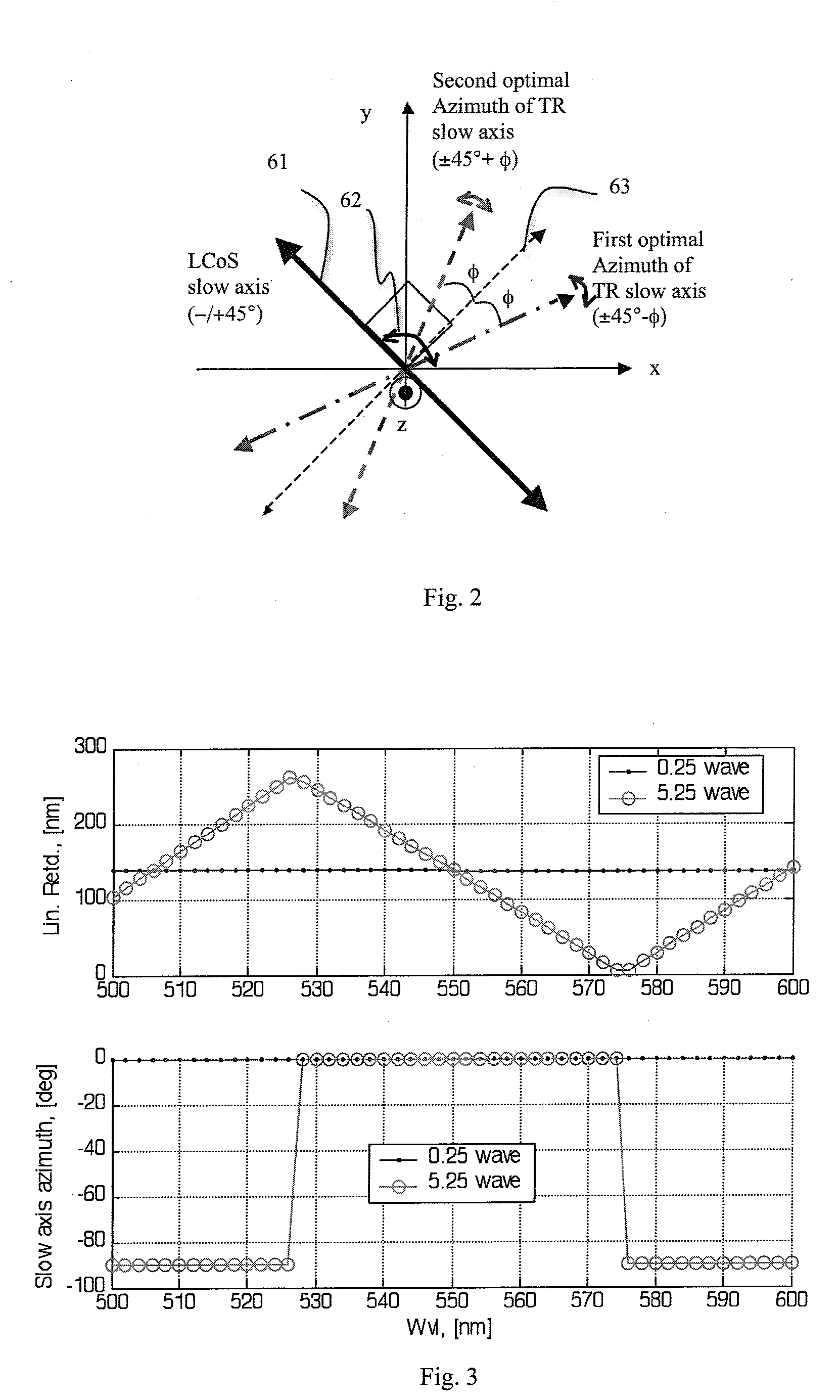Near Halfwave Retarder For Contrast Compensation
a liquid crystal display and contrast compensation technology, applied in the field of near halfwave retarder, can solve the problems of difficult to form true zero-order retarders, difficult to polish birefringent crystal plates to physical thicknesses less than 100 microns, and significantly lower on-state/off-state contrast ratios, etc., to achieve the effect of improving on-state/off-state contrast ratio, improving contrast ratio, and improving contrast ratio
- Summary
- Abstract
- Description
- Claims
- Application Information
AI Technical Summary
Benefits of technology
Problems solved by technology
Method used
Image
Examples
Embodiment Construction
[0040]In order to provide an improved trim retarder for a WGP-based LCoS microdisplay system it is necessary to look at some of the preferred characteristics of trim retarders. Ideally, a trim retarder should be able to (a) deliver extremely low crossed-polarization leakage in the light off-state; (b) deliver nearly unchanged crossed-polarization output in the light on-state of the compensated panel versus uncompensated panel; (c) exhibit good mechanical clocking sensitivity for the initial alignment (i.e., when clocking is required) and for long-term alignment drift; (d) provide a high contrast ratio of on-state intensity versus off-state intensity over a given red, green, blue band or the entire visible wavelength band; and (e) exhibit good retardation magnitude and orientation uniformity.
[0041]Moreover, in addition to providing in-plane retardance, it may be advantageous for the trim retarder to provide out-of-plane retardance. While in-plane retardance is typically provided with...
PUM
 Login to View More
Login to View More Abstract
Description
Claims
Application Information
 Login to View More
Login to View More - R&D
- Intellectual Property
- Life Sciences
- Materials
- Tech Scout
- Unparalleled Data Quality
- Higher Quality Content
- 60% Fewer Hallucinations
Browse by: Latest US Patents, China's latest patents, Technical Efficacy Thesaurus, Application Domain, Technology Topic, Popular Technical Reports.
© 2025 PatSnap. All rights reserved.Legal|Privacy policy|Modern Slavery Act Transparency Statement|Sitemap|About US| Contact US: help@patsnap.com



